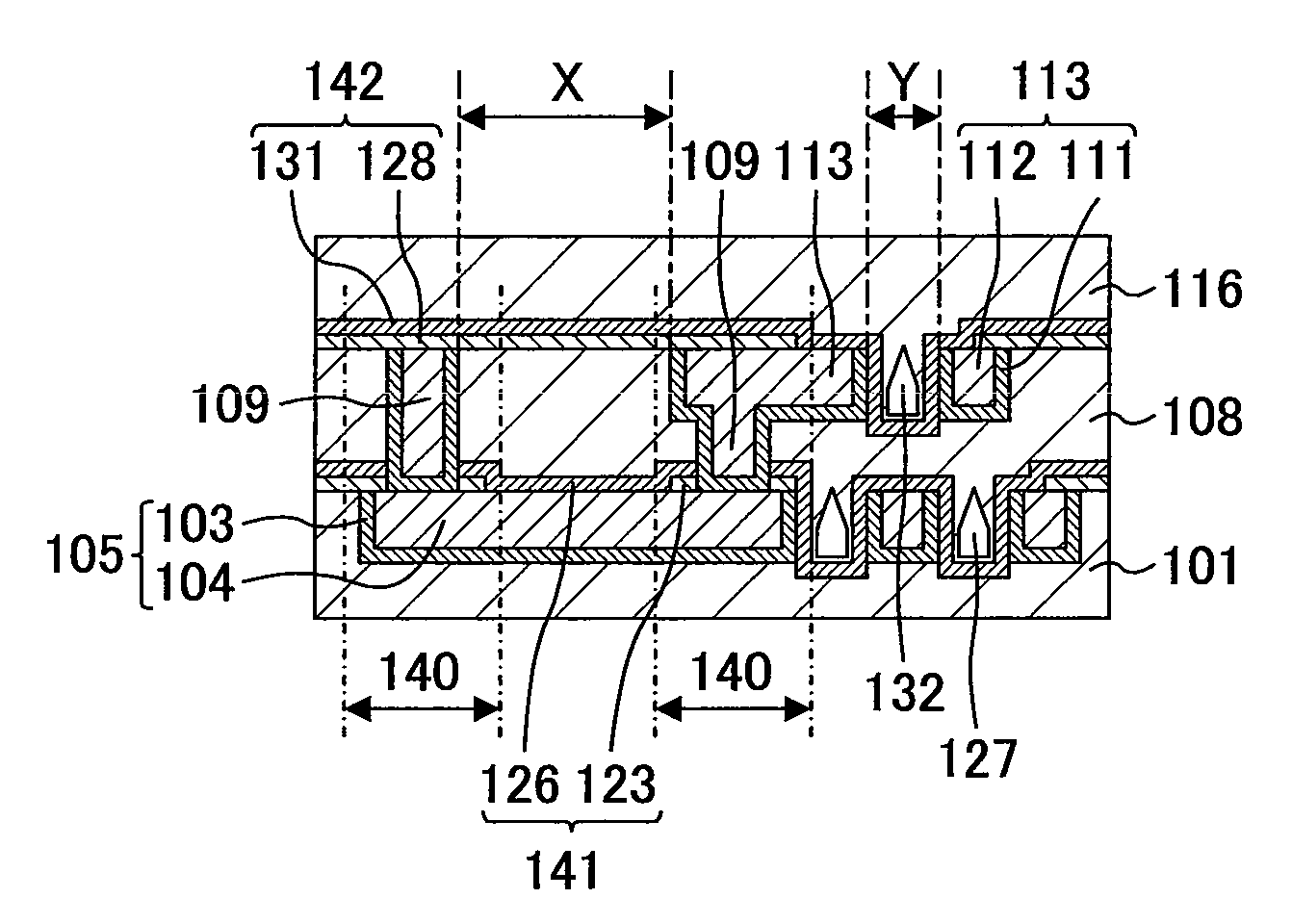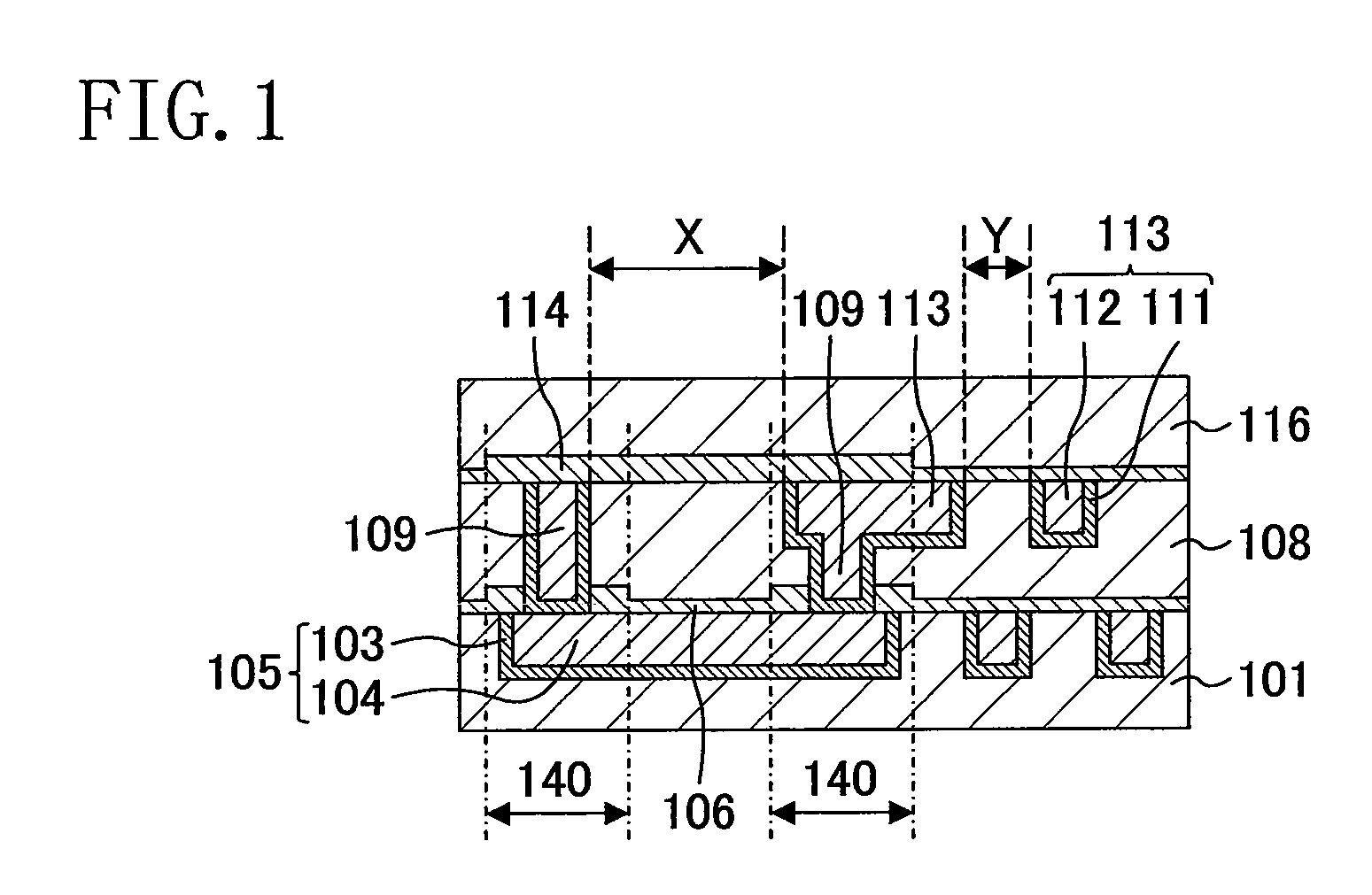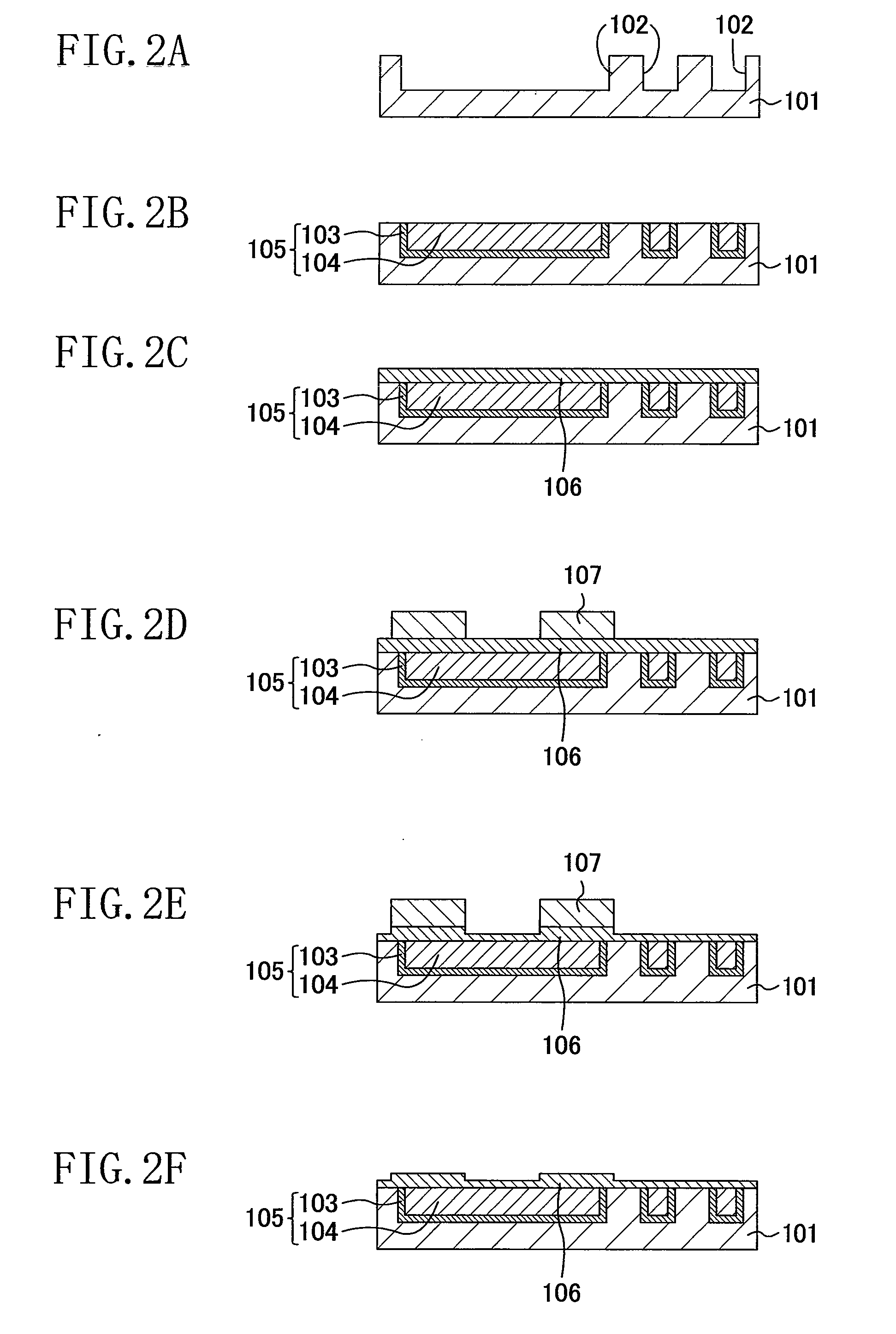Semiconductor device and method for fabricating the same
a technology of semiconductor devices and semiconductors, applied in semiconductor devices, semiconductor/solid-state device details, electrical apparatus, etc., can solve the problems of electromigration failure and deterioration of the electromigration resistance of the interconnect, and achieve the effect of increasing the effective mechanical strength of the interconnection structure, increasing the electromigration resistance, and reducing the capacitan
- Summary
- Abstract
- Description
- Claims
- Application Information
AI Technical Summary
Benefits of technology
Problems solved by technology
Method used
Image
Examples
first embodiment
[0055]A semiconductor device according to a first embodiment of the present invention will be described with reference to FIG. 1. It is to be understood that materials and numerical values cited below are only preferable examples, and the present invention is not limited to these materials and numerical values.
[0056]As shown in FIG. 1, lower-level interconnects 105 (first interconnects) are formed in an interlayer insulating film 101 (a first interlayer insulating film) formed on a semiconductor substrate (not shown). A liner insulating film 106 is formed on the interlayer insulating film 101 and lower-level interconnects 105. On the liner insulating film 106, an interlayer insulating film 108 (a second interlayer insulating film) is formed. Vias 109, which are electrically connected with the lower-level interconnects 105, are formed in the liner insulating film 106 and interlayer insulating film 108. In the interlayer insulating film 108, upper-level interconnects 113 (second inter...
second embodiment
[0086]A semiconductor device according to a second embodiment of the present invention will be described with reference to FIG. 5. It should be noted that materials and numerical values cited below are only preferable examples, and the present invention is not limited to these materials and numerical values.
[0087]In the semiconductor device according to this embodiment, liner insulating films 141 and 142 are multilayer films. In the following description, differences from the first embodiment will be mainly discussed.
[0088]As shown in FIG. 5, lower-level interconnects 105 are formed in an interlayer insulating film 101 formed on a semiconductor substrate (not shown). A first liner insulating film 117 is formed on the interlayer insulating film 101 and lower-level interconnect 105. A second liner insulating film 119 is formed over the first liner insulating film 117. The first and second liner insulating films 117 and 119 form the liner insulating film 141. On the second liner insula...
third embodiment
[0121]A semiconductor device according to a third embodiment of the present invention will be described with reference to FIG. 9. It should be noted that materials and numerical values cited below are only preferable examples, and the present invention is not limited to these materials and numerical values.
[0122]In the semiconductor device according to this embodiment, air gaps 127 are formed between adjacent lower-level interconnects 105 and 105, and air gaps 132 are formed between adjacent upper-level interconnects 113 and 113.
[0123]As shown in FIG. 9, lower-level interconnects 105 are formed in an interlayer insulating film 101 formed on a semiconductor substrate (not shown). A first liner insulating film 123 is formed on the interlayer insulating film 101 and lower-level interconnects 105. A second liner insulating film 126 is formed over the first liner insulating film 123. The first and second liner insulating films 123 and 126 form a liner insulating film 141. An interlayer i...
PUM
 Login to View More
Login to View More Abstract
Description
Claims
Application Information
 Login to View More
Login to View More - R&D
- Intellectual Property
- Life Sciences
- Materials
- Tech Scout
- Unparalleled Data Quality
- Higher Quality Content
- 60% Fewer Hallucinations
Browse by: Latest US Patents, China's latest patents, Technical Efficacy Thesaurus, Application Domain, Technology Topic, Popular Technical Reports.
© 2025 PatSnap. All rights reserved.Legal|Privacy policy|Modern Slavery Act Transparency Statement|Sitemap|About US| Contact US: help@patsnap.com



